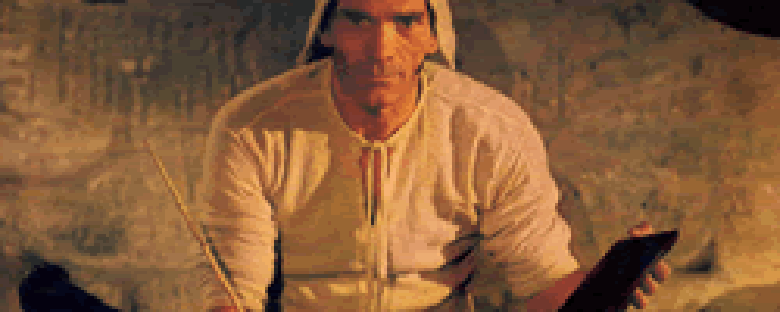Reviews
I racconti di Canterbury
Pier Paolo Pasolini
Italy / France, 1971
Credits
Review by Leo Goldsmith
Posted on 10 July 2004
Source 35mm print, screened at Film Forum
External links
Features: The Final Films of Pier Paolo Pasolini
Reviews: Arabian Nights
Reviews: The Decameron
Reviews: Salò, or The 120 Days of Sodom
“Why create a work of art when dreaming about it is so much sweeter?” This is Giotto’s question at the end of Pasolini’s Decameron. With this question in mind, the second film of the Trilogy of Life, The Canterbury Tales, reconfigures the relationship of the artist to the peasants of the stories. Instead of depicting the artist like Giotto, interacting with the people he depicts, Pasolini appears in the character of Chaucer, curiously removed from the marketplaces, fields and churches of the peasants’ world. Largely dispensing with Chaucer’s frame-story (which had pilgrims spinning different yarns along the road to Canterbury), Pasolini’s Chaucer sits in his library, musing over various tales found in his collection of books. In this vision of rural, medieval England, the artist-figure is not united with peasant life in the same way that Giotto seemed to be, rather Chaucer is an intellectual, physically distant from the scenes of human interaction, though not indifferent to their circumstances. For Pasolini’s Chaucer character, the stories of the peasants are not directly observed, but found among the books in his study. We even briefly see him playfully consulting a copy of The Decameron.
This shift in the role of the artist is accompanied by more subtle changes in the general tone of the tales included in the film. Indeed, the facts of climate notwithstanding, Chaucer’s England is portrayed in a far less sunny fashion than Boccaccio’s Naples. Each film presents its own version of rural paradise — lush, sun-baked olive groves and ruins in the former, golden wheat fields and farmhouses in the latter — but Pasolini’s camera clearly favors the bronze skin of the Neopolitan peasants to the sallow and spotty complexions of the English. In the earlier film, lust goes uninhibited: nuns and priests indulge themselves, and one character comes back from the dead to tell his friend that, in Purgatory, fornication does not really count as a sin. By contrast, the England of The Canterbury Tales is much more harsh in its treatment of vice of all kinds. Lust, greed, and hypocrisy meet with violent retribution in the form of public execution, everlasting damnation, and hot pokers between the buttocks. The film concludes, not with a beatific vision of the Virgin Mary, but with a comical, yet frightening premonition of Hell: demons rape and whip the sinners, and a giant Satan farts corrupt monks from an enormous red anus. Thus, if the beautiful symmetry of Cimabue and Giotto were the aesthetic models for the idealized vision of the trilogy’s first film, the second film adapts the paintings of Brueghel and Bosch with their chaotic, warty images of rural life. As Brueghel’s paintings embrace the ugly and raucous aspects of the peasants’ world, Chaucer’s tales are at once more scatological and more cruel than Boccaccio’s, and so this second film is that much more gritty than its predecessor.
We don’t do comments anymore, but you may contact us here or find us on Twitter or Facebook.



